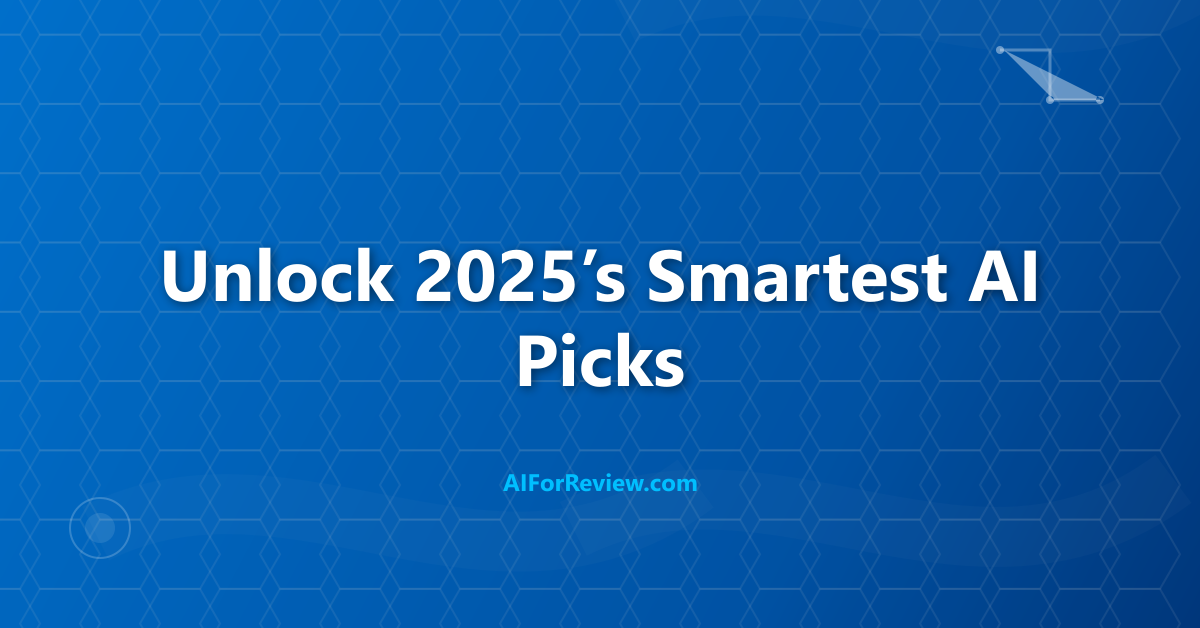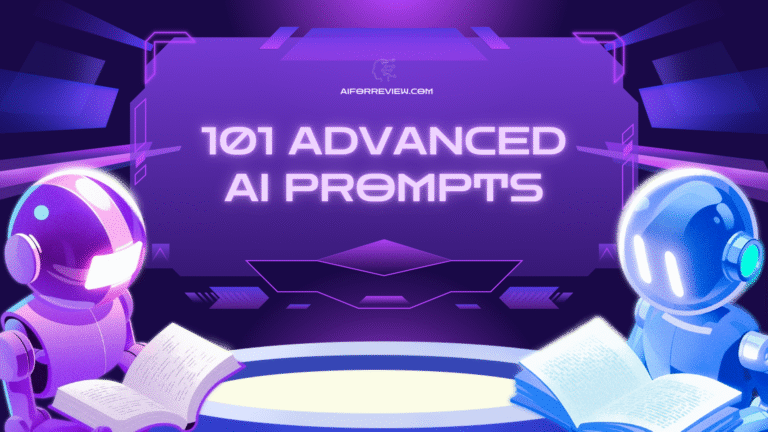Feeling lost in a sea of artificial intelligence tools and unsure which one will actually make a difference for us in 2025? With new options launching every week, choosing the right AI tool can be the key to saving time, boosting productivity and staying ahead. Let us explore how to confidently pick the best AI tool for our needs before the next wave of innovation arrives.
When I first started exploring AI tools, I got overwhelmed quickly. There were hundreds of apps promising smart results, writing content in seconds, automating marketing, designing logos, analyze data, and more.
But not every tool worked the way I needed.
Sometimes the output was off. Sometimes the UI was confusing. And in some cases, I found better alternatives that were cheaper or easier.
If you are a beginner, student, or someone trying to improve your productivity or business, let me walk you through the simple and practical steps I now follow to choose the right AI tool for any task.
If you have not yet read my earlier posts on What Are AI Tools and Benefits of Using AI Tools, I recommend checking those first as they will give you the background you need.
Step 1: Be Clear About the Problem You Are Trying to Solve
Before opening Product Hunt or Google to search “Best AI tool for writing,” I now ask myself:
- What exactly do I want this tool to do?
- Is this task repetitive, creative, or analytical?
- Will it save me time, money, or mental effort?
For example, I wanted to write blog outlines faster. That is a clear task: generate outline ideas based on a topic.
But if you simply say, “I want help with writing,” the tools may give you long-form content, copywriting hooks, summaries, or emails things you may not need.
Define your goal with this table structure:
| Goal | Example Task | AI Category |
|---|---|---|
| Create content faster | Write article outlines, expand drafts | Writing Assistants |
| Automate design tasks | Remove background, create banners | Image AI Tools |
| Analyze customer data | Extract patterns, summarize reviews | NLP/Data AI |
| Respond faster to customers | Auto-reply to emails or chats | AI Chatbots |
| Speed up research | Summarize articles, compare features | Research/QA Tools |
Once you are specific, the search gets easier.
Step 2: Check for No-Code or Beginner-Friendly Interfaces
If you are a non-developer or want quick results, focus on tools that do not need setup, API keys, or coding.
I always test for:
- Does it run in the browser?
- Is the UI simple and self-explanatory?
- Does it support drag-and-drop or natural language input?
Here are some tools I personally found easy for non-coders:
| Tool | Purpose | Why It Is Beginner-Friendly |
|---|---|---|
| Canva AI | Graphic design | Drag-and-drop, templates, real-time editing |
| ChatGPT | Content & conversation | Plain English input, instant output |
| Notion AI | Productivity writing | Works inside Notion, auto-suggestions |
| Writesonic | SEO & writing | Templates for each content goal |
If a tool needs setup or a learning curve, I either skip it or bookmark it for advanced use later.
Step 3: Use Free Versions First
Almost every major AI tool offers:
- A free plan (with limits)
- A free trial (3–14 days)
- Demo mode or sandbox access
Use this to your advantage. Before paying, I do a quick test by applying it to my real workflow.
Example: When testing Jasper AI and Copy.ai, I asked both to write product descriptions for the same software. I compared:
| Criteria | Jasper AI Output | Copy.ai Output |
|---|---|---|
| Clarity | Very clear | A bit generic |
| Tone matching | Formal tone as asked | Slightly casual |
| Word count limit | Easy to control | Needed manual trimming |
| Output structure | Properly segmented | Flat and repetitive |
That small test helped me decide which was better for my use case.
Also: Track your usage. Many tools throttle requests or outputs on free plans, so plan your testing time accordingly.
Step 4: Compare Alternatives Based on Real Usage
Avoid choosing tools just based on blog roundups. Instead, do a side-by-side test using:
| Feature to Compare | Description |
|---|---|
| Ease of Use | How simple is it to start and use the tool? |
| Output Accuracy | Does it do the task correctly, or need editing? |
| Speed | Does it respond quickly or take time to load/process? |
| Support and Updates | Is it actively developed? Do users get help easily? |
| Free vs Paid Features | What is locked behind the paywall? |
Where possible, check user opinions on:
- Reddit (try subreddits like r/ChatGPT, r/Entrepreneur, or r/SaaS)
- Product Hunt reviews
- G2 and Capterra (especially for B2B tools)
Real feedback tells you what the sales page does not.
Step 5: Consider Integration With Your Existing Tools
AI tools become more powerful when they fit into your workflow.
Ask:
- Does it connect with Google Docs, Notion, Trello, or Slack?
- Can it export in formats I already use?
- Can it plug into Zapier or automation tools?
Examples:
| AI Tool | Useful Integration | Workflow Use |
|---|---|---|
| Writesonic | Google Docs plugin | Write directly inside Docs |
| Notion AI | Native in Notion | Notes, tasks, content |
| ChatGPT Pro | Custom GPTs with plugins | Research, images, web search |
| Synthesia | Exports to YouTube or MP4 | AI video creation workflows |
Even if the tool is good, lack of integration may slow you down.
Step 6: Price Evaluation (Monthly vs Yearly)
Some tools seem affordable until you realize the limits.
I always check:
| Plan Type | What to Check |
|---|---|
| Free Tier | Number of words, credits, or file limits |
| Monthly Plan | Does it include core features or lock them? |
| Yearly Plan | Is the discount worth upfront payment? |
| Add-ons | Are key features sold separately? |
Example: Jasper AI’s Boss Mode is useful, but it costs more. Meanwhile, ChatGPT gives access to GPT-4 and web tools for just ₹1,900/month globally.
Start free, upgrade only if you use it regularly.
Step 7: Security and Data Use
For serious use (e.g., legal docs, customer data), always check:
- Does the tool store your data?
- Is your input used to train future models?
- Is the company based in a region with strong privacy laws?
Most AI tools explain this in their Terms or Privacy Policy. Skim it, or search for “[Tool name] + data privacy” online.
Final Thoughts
There is no one-size-fits-all AI tool. Your ideal tool depends on your needs, skills, and budget.
The key is to:
- Be clear about what you want the tool to do.
- Try at least 2 alternatives using the same test.
- Choose the one that gives you consistent, useful results with minimum effort.
Start small, upgrade slowly, and always test for your real tasks.
Next up, I will cover specific tools for different categories—like content writing, marketing, customer service, and more.
Frequently Asked Questions
What is the most important step when selecting an AI tool in 2025?
The most important step is to clearly define the problem we want to solve, then check if the tool supports that specific use case and test it with our real workflow before making a decision.
How can we compare different AI tools to find the best one?
We can compare tools by looking at their cost, accuracy, ease of use, user experience, and how well they fit with our existing systems, as well as by reading real-world reviews and trying free versions.
What should we watch out for when trying new AI tools?
It is helpful to check if the tool is easy to use, secure, and compatible with our systems, and to make sure it meets our needs without adding unnecessary complexity or risks.




